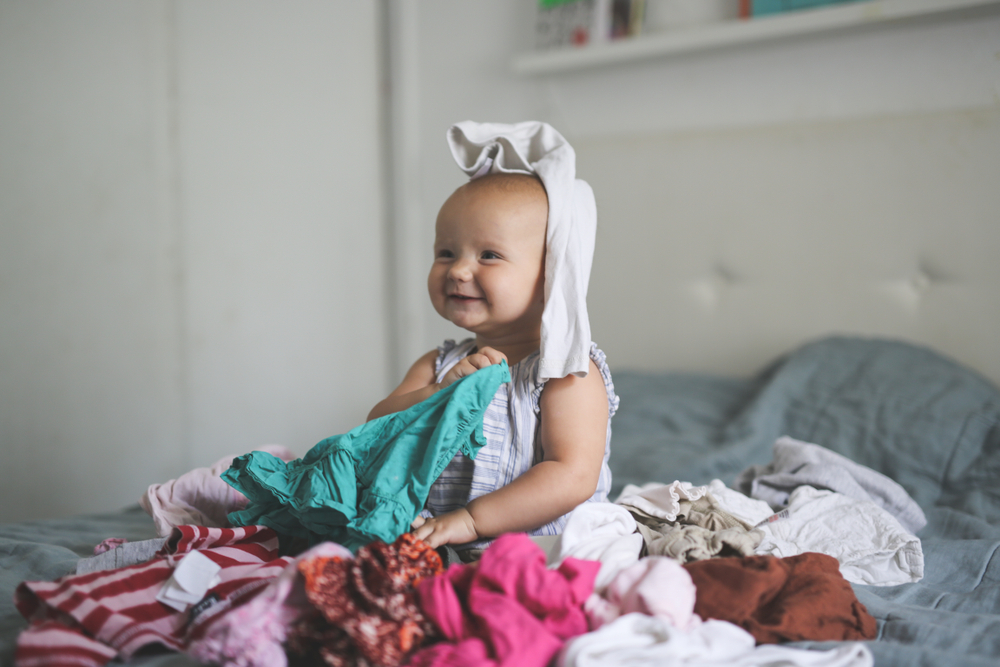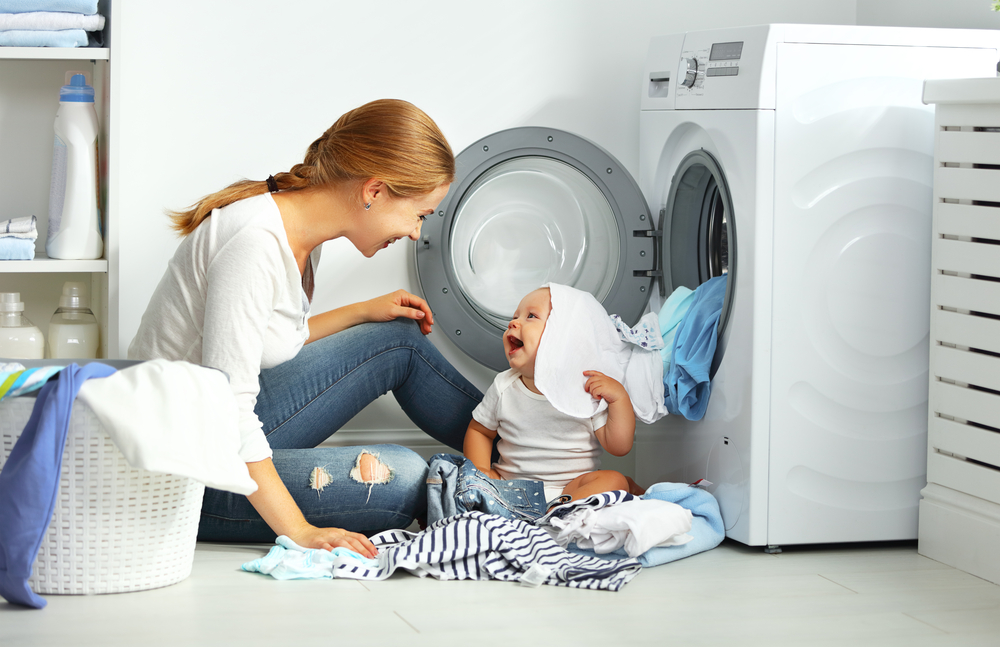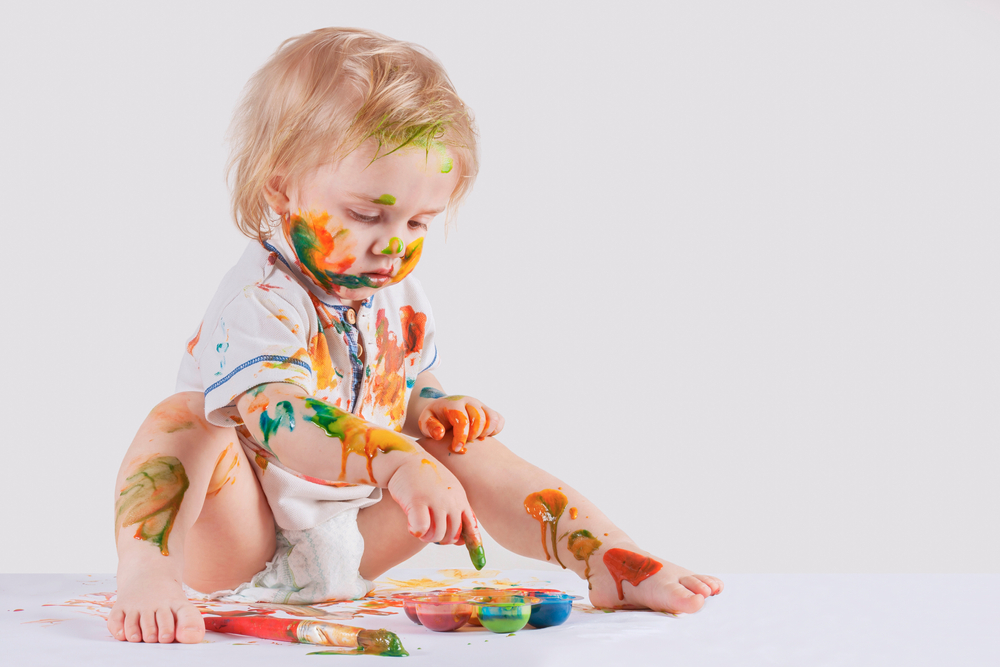You were prepared for the sleepless nights and the constant nappy changes, but were you ready for the laundry pile the size of Everest? It’s one thing that many parents don’t think about until the ominous pile in the corner creeps up on them.
It’s no surprise that baby clothing is the main culprit. With multiple outfit changes a day after little accidents and trying to get your wear out of all those gorgeous outfits that people generously gifted, your baby goes through a lot of clothing. Well, mummies and daddies, here comes the washing pile.
The good news is that washing your baby’s clothes doesn’t need to be a huge chore, but it can feel like one if you don’t know where to start. Many parents wonder what detergent to use or how to remove stains. Let’s face it; baby clothes are stain magnets from poop explosions to food stains and messy play spillages.
These simple steps and handy tips will make your laundry pile feel lighter as we break down the best way to wash your baby’s clothes.
What You’ll Need
Before starting the washing pile you’re trying to avoid (we understand), ensure you have everything you need to make the task as quick and easy as possible.
- washing powder or laundry detergent
- a drying rack
- laundry mesh bag (so those tiny socks don’t go walkabout)
- stain remover (optional)
And, of course, a washing machine.
Washing Instructions
Here are 6 simple steps to washing your baby’s clothing.
Step 1 Pre-treat stains.
Step 2 Separate into colours and whites.
Step 3 Always check the labels for specific washing instructions, especially for delicate or wool clothes.
Step 4 Add washing powder or detergent.
Step 5 Wash on a cool cycle.
Step 6 Air dry.
What to Wash Baby Clothes With
Nothing is better than feeling the soft skin of a tiny, wiggly baby and taking in their newborn scent; as parents, you want to keep their skin that way. Baby’s skin is very sensitive, so using a gentle, unscented washing powder or detergent is best.
All major detergent brands are tested to be safe for baby clothes. Some have even been specially formulated for baby clothes. Whatever washing powder you choose, check the packaging for the British Skin Foundation logo.
Avoid fabric softeners and conditioners, as these chemicals can irritate your baby’s skin. Their scent is sweet enough, so there’s no need to fragrance their clothes, and the added softness isn’t worth red, irritated skin.
How to Dry Baby Clothes
It is always best to use a drying rack because a dryer can shrink clothes. Baby clothes are cute enough, and finding those tiny socks can be tricky; shrinking them will do you no favours. Taking a 3–6-month baby grow and shrinking it to newborn size in the dryer is enough to make any tired parent cry.
How to Remove Stains
You were probably so excited when buying beautiful clothes for your newborn, even before they arrived, but you probably didn’t picture them covered in stains. Bibs will be your new best friend to keep those clothes looking new for longer. These bibs are designed not only for mealtimes but for messy play too. They have long sleeves and provide more protection from stains than regular-sized bibs.
Bibs come in all sorts of shapes and sizes, and one way to prevent stains as best as possible is to use a coverall bib like the Ziggy Glorious Mess Coverall Bib. Other coverall bibs include the SillyBillyz Towel Messy Eater Bib, which is water-resistant to protect your baby’s clothes from dribbles and spills. Having coverall bibs means you and your baby can have messy fun without giving you anxiety over the cleaning up and the washing.
Steps for Stain Removal
Step 1 Remove the garment as soon as possible after the stain occurs.
The longer the stain sits on the garment, the harder it is to get out. Whip out the mountain of spare clothes in your changing bag and get your baby clean and fresh again.
Step 2 Use a piece of kitchen roll to dab off any excess.
If there’s a build-up of residue, it will be easier to wash later if that has been removed. Dealing with bodily fluids and milk spillages might seem daunting initially, but you’ll be unphased by it all in no time.
Step 3 Soak in cold water for a few hours.
Soaking the stain gives it time to release from the fibres before washing. Don’t scrub the stain, which can sometimes worsen and damage the clothing.
Step 4 Use a little bit of gentle, unfragranced stain remover (optional).
It’s always best to use as fewer chemicals on baby clothes as possible. Still, for a particularly pesky stain, you can use gentle stain remover by lightly dabbing it onto the affected area.
Step 5 Wash as normal.
After pre-soaking the clothes put them in the washing machine as normal.
What is the Correct Temperature to Wash Baby Clothes
Most baby clothes, like cotton, are made of washable fabrics to withstand the constant washing and drying cycle, but what temperature is best?
Washing your baby’s clothes at a cool 30 degrees setting should still eliminate stains and won’t shrink the fabric. But, if you have found an especially tricky stain, washing baby clothes with a hot rinse is fine too. This option is harsher on baby clothes than a cool wash but more effective in stain-removing.
For delicate clothes or those with sentimental value, washing on a cool cycle is always best to be safe. Always check the label for instructions.
How Often Should Baby Clothes Be Washed?
The best thing to do is wash baby clothes with bodily fluids as soon as possible. You want to ensure your baby is safe from nasty germs and their clothes are hygienic to avoid spreading illnesses. Generally, you should wash your baby’s clothes after every use.
It’s easy to forget about the elements that make up your baby’s clothes and uses, such as swaddles, bibs, snowsuits, hats and blankets. All these items need regular washing too.
Baby blankets should be washed every 2 weeks unless dirtied or used regularly.
Hats, mittens and other tiny baby accessories can be washed as and when they’re needed.
For bedtime fabrics, swaddles and sleeping bags should be washed every 3 uses or so. If you’re unsure what to use to put your little one to sleep at night, look at how to properly and safely dress your baby for bed guidance.
Use your judgement to determine whether something needs washing. If something gets soiled or starts to smell, it’s always best to give it a good wash to protect your baby.
Should Baby Clothes Be Washed Before Using?
Dermatologists recommend washing clothes before your baby wears them. When clothes are in the warehouses, they can be covered with all sorts of things like dust, dirt and other irritants. It’s always best not to chance it, so give clothes a quick wash before your baby wears them.
Should Baby Clothes be Washed Separately?
There is no need to wash baby clothes separately from the rest of the laundry. It’s fine to throw your or your family member’s clothes in with your baby’s. The only exception is if someone in your household has been ill. If this is the case, wash their clothes separately from everyone else’s, especially your baby’s clothes.
We hope this guide has covered everything you need to know about washing your baby’s clothes so you can get the rid done quickly and without a fuss.



